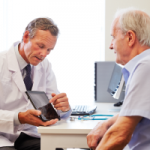Further, “When working with athletes, we work more closely with a physical therapist to try to find a set of exercises that strengthen all of the muscles around the affected joint in an effort to develop the right program to strengthen and stabilize the joint,” Dr. Russell says. “Non-athletes still need therapy, but not as intense.”
Regarding surgery, Dr. Russell would be more apt to recommend surgery for athletes because they want to get back to participating in sports quickly. “Non-athletes may be happy with a lower level of function, so physical therapy may suffice—especially with minor injuries,” she says. For ligament injuries, she would advise fixing them surgically for athletes, but letting them scar and heal for non-athletes.
Advice on Exercising
An athlete who has arthritis should be aware of it and tailor their exercise regimen to avoid further injury to a joint. Dr. Russell would advise athletes with joint injuries to favor low-impact activities over high-impact activities to preserve joints. She also suggests modifying workouts between high- and low-impact activities. To help patients understand which is which, she defines high impact as any activity in which both feet are off the ground simultaneously (i.e., running or jumping onto a step) and low impact as an activity in which one foot is always on the ground, such as using an elliptical machine.
Dr. Ranawat also supports cross training and explains to patients that by only doing one type of exercise they focus on just one muscle group. By participating in both load-bearing and non-loading bearing exercises, they can focus on several different muscle groups.
Regarding running, Dr. Ranawat says there are different schools of thought about its merits. “Some say it is the best exercise to decrease your body mass index, increase muscle mass and provide cardiac output, while others think too much running will deteriorate your joints because [there’s] too much load on cartilage,” he says. “I think the answer lies somewhere in the middle. Cartilage functions best with low body weight and lean muscle mass around it; it performs well with a certain amount of load, but not too much.”
New Ways of Thinking
In recent years, Dr. Ranawat says new thoughts have emerged regarding treating osteoarthritis (OA). More research has focused on ortho-biologics (i.e., platelet rich plasma [PRP] therapy). At HSS, “PRP is used in selected individuals both with in-office procedures and during surgery. This [therapy] is done by spinning down blood and injecting it into the knee (in outpatient instances) or a defect (during surgery),” he says.

